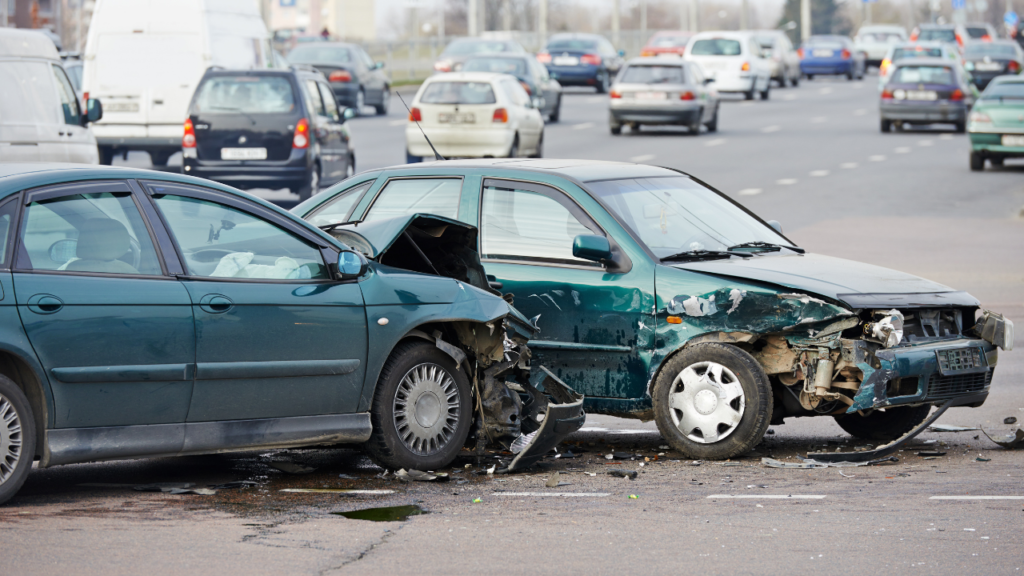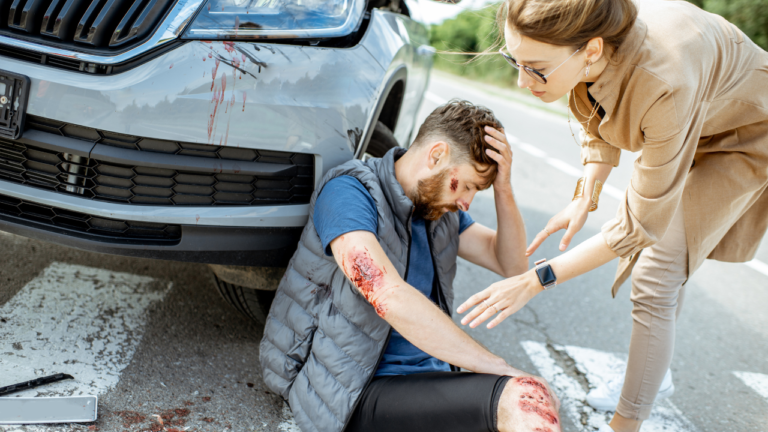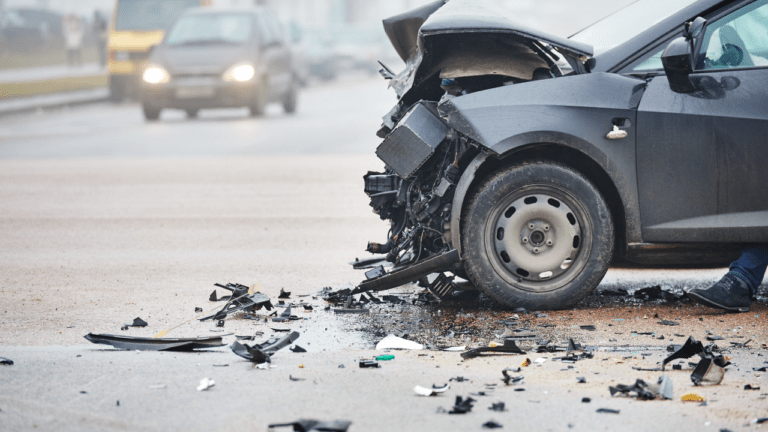How does full coverage car insurance work? Should you go for basic car insurance or full car insurance coverage? Does the nature or state of your car need basic or full coverage?
Buying insurance for your car is not a simple task because you may not know which insurance coverage offers maximum protection. Because they are many policies your broker or company will suggest for you, you will need to make a personal final decision otherwise you may end up buying unnecessary coverage, or at worst buy insufficient car insurance coverage. Hopefully, this article will help you make the best insurance decisions.
Full coverage car insurance is a collective policy that holistically protects you financially like damage to your car from non-accident events, at-fault accidents, collisions, and bodily injuries.
Page Contents
What is included in full coverage?

There is no standalone insurance policy that offers full coverage for your car. As already mentioned, handpicked difference policies bundled together offers what is termed as full car insurance coverage. The following are policies that are included in full coverage:
- Collision coverage
- Liability car insurance
- Comprehensive coverage
- Personal injury protection and
- Uninsured/underinsured motorist coverage.
If you want to understand each of those policies differently, just open each point and read about them in detail.
Some of the policies listed above are mandatory while others are optional of course depending on where you come from and which part of your country you live. If you are living here in the USA, liability coverage is a must-have coverage in all states except 2. Liability insurance coverage is mandatory in many countries but could be branded differently from here in the USA.
First Part of full car insurance coverage.
The first part of full coverage includes:
- Liability coverage and
- Uninsured/underinsured motorist coverage.
What are the two types of liability coverage?
As far as car insurance is concerned, two types of liability coverage are:
- Bodily injury liability (BI) and
- Property damage (PD) liability
If you are involved in an accident and you are deemed the at-fault driver, the people you injured will file claims through your Bodily injury liability. The properties (cars, buildings, etc) you damaged will be repaired or replaced using your property damage liability.
Liability is must-have car insurance in almost all states in the USA. It is usually underwritten as 25/50/25. Do you want to know the interpretation? here we go!
How to interpret the 25/50/25 liability limit?
Interpreting the 25/50/25 liability limit is very simple and here is what it refers to;
- Up to $25,000 per person injured.
- up to $50,000 for all people injured in the accident and
- Up to $25,000 for property damage coverages.
You are advised to buy more than what your state requires as minimum insurance coverage. For instance, the average car accident settlement in Texas is from $15,000 to more than $2 million. This implies that a driver who chose 25/50/25 liability limits might need to fork out additional costs from his own pockets.
Uninsured/underinsured motorist coverage

This also has 2 components ie;
- Bodily injuries (BI)
- Property damage (PD).
Yes, we have seen that both BI and PD liabilities cater to the other driver you injured or whose car you damaged. What about you or your passengers? Liability has nothing to do with you or your passengers. If you, your car, and or your passengers are injured, you may need to file the claim through your uninsured or underinsured motorist car insurance. But you will do this only if the driver that hit you has no or insufficient insurance coverage.
You would ordinarily claim from the other (at-fault) driver’s liability coverage, but because he or she has no or insufficient insurance coverage, that’s why you could resort to your policy from your company.
Underinsured motorist (UM) refers to a situation where the driver that hit you has insufficient liability coverage, whereas an uninsured motorist is any driver with no liability coverage. According to current data, more than 10-14% of drivers in the USA are uninsured.
Second Part of full car insurance coverage
This part of full car insurance coverage consists of policies like;
- Collision coverage
- Comprehensive car insurance
- Personal injury protection (PIP)
Is collision insurance the same as full coverage?

If you are involved in a car crash where you are the at-fault driver, another option is to file the claim through your collision car insurance for the repair costs or vehicle replacement. Collision is the most expensive car policy and constitutes almost 50% of your coverage costs.
So the answer is no, Collision insurance is not the same as full coverage. As already explained, collision coverage forms part of the full coverage. This policy is optional unless you leased your car or you are financing your auto loan.
Comprehensive car insurance covers non-accident related losses. This policy covers the following:
- Extreme weather conditions like hailstorms, floods, etc
- Vandalism
- Car theft
- Collision with an animal
- Tree hitting your car and others.
PIP or personal injury protection covers you and your passenger’s medical bills irrespective of whether you are at fault on not. Instead of claiming through the other drivers’ insurance, you could decide to claim from your PIP. In fact, you would rather deal with your own company for PIP other than claim BI from another company you are not familiar with.
PIP and med pay are almost similar. Though PIP is mandatory in more than 20 states in the USA, there is no state where MedPay is a must-have policy. If you already carry health insurance, you can decide to drop PIP.
What is the difference between full coverage and liability?

Liability coverage constitutes Bodily injury (BI) and property damage (PD) and both liabilities help by covering the other driver whose car you damaged or whom you injured. Liability does not cover the at-fault drivers.
On the other hand, full coverage is a list of different policies you will need to buy to offer yourself maximum financial protection. Depending on the car you are driving or your financial situation, you may or may not need full insurance coverage. If have a car lease or took up a car loan, you may be mandated to carry full coverage because your auto loan company or lessor needs to protect the car till it is paid off.
Is it worth getting full coverage on an old car?
This is a common question you guys have been asking for some time on the website. To be sincere it is a tricky situation because the answer is not straightforward.
According to valuepenguin.com, the Annual insurance cost for any vehicle that is more than 10 years old exceeds more than 45% of the car’s actual cash value. According to Bankrate, the average cost of full coverage car insurance is $1,771 per year in the USA. Paying $1,771 yearly for $4,000 worth of the vehicle is not a smart move.
From the same sources listed above, research has shown that your yearly premiums will exceed the market value of your 15+ years car after an at-fault accident.
From those research-based scenarios, It is recommended you drop full insurance coverage for any vehicle that is more than 10-15 years old. My insurance broker also says that your 10+-year-old car has more than 70% of being totaled after any car crash, you should not overpay for its insurance coverage.
Is it better to have collision or comprehensive?
Well, this is also a tricky one and remember I only give my opinions. You may need more consultation before you make decisions. If you asked me, I would recommend carrying comprehensive if you are in a situation where you can not carry both collision and comprehensive coverages.
A comprehensive insurance policy protects you financially from events that are beyond your control such as weather extremities, vandalism, theft, and hitting an animal. I also already informed you that, more than 40% of your full coverage costs go to collision coverage, so dropping it drastically reduces your insurance costs.
You should drop collision and continue carrying comprehensive just because there are other policies that you can use to cover collision events. Actually many policies cover partly what collision covers, but no coverage overlaps with a comprehensive policy.
A quick check on my full coverage reveals that I am paying $211 for collision coverage whereas my comprehensive coverage costs just $40 yearly. Collision is not only 5-times more costly compared to comprehensive but is also the most expensive policy as far as car insurance is concerned.
What is the best auto coverage to have?
I already told you that some auto coverages are compulsory while others are not of course depending on where you come from. Your state or country usually dictates the minimum insurance coverage you should buy before driving your car.
Depending on other circumstances, your insurance coverage could be different from your counterparts. For instance, if you took up an auto loan or car lease, there are additional policies you should buy as required by the loan company.
The best auto coverage you should carry is full coverage. If you cannot afford this coverage, go with liability car coverage because this helps to cover accidents you are at fault for. As additional advice, always buy much higher coverage that is more than your state’s minimum requirement.
Do I need full coverage insurance on a used car?

This also depends on the mileage or how old a car you are trying to insure. If you are driving an expensive car that is costly to replace or repair after a car crash, yes go on and buy full coverage.
If you think or you are sure your yearly coverage costs exceed more than 50% of your car’s current market value, then think twice before choosing full coverage.
when to drop full coverage on a car?
Consider dropping full coverage if:
- Your mileage is high.
- If you are struggling with routine budgets. If you are finding it hard to survive due to a financial crisis, talk to your insurance broker about the policies you should drop or keep without increasing risk significantly.
- Always check the value of your car against your yearly premiums. It makes no sense to pay premiums that are higher than the current actual cash value of your car.
- If you are the guy who has enough money in savings, you can decide to drop full coverage since you can non-painfully pay for car damage costs.
- You do not need to buy full car insurance if you are the guy who rarely drives your car. This is because people who rarely drive have a low risk of getting involved in car accidents compared to people who almost drive daily.
what does full coverage insurance not cover?
Buying Full coverage insurance gives maximum protection on the road, but there are many events this coverage does not cover.
Full coverage insurance does not cover the following:
- Home damages
- Life insurance
- leased cars.
- Gap insurance.
- Car rentals.
- New car replacement policy.
- Roadside assistance.
- personal belongings in the car.
Though some full coverage extends to give you coverage for the above items. You may need to speak with your insurance agent to find out if you have coverage or buy additional coverage if want to insure the above events.
Who is the number 1 insurance company in America?
There are many excellent auto insurance companies in the USA all with the best services. What I need to remind you is that it’s not a guarantee that a large company offers the best services. On the same note, you do not want to deal with a company that can not afford to compensate you once you fall victim to a car accident.
Here are the best car insurance companies in the USA:
- In my opinion, state farms with a market share of 16.73% is the largest auto insurance followed by AllState whose market value is around 9.8%.
- Progressive and Geico come in 3rd and 4th position with a market share of 9.71% and 9.49% respectively.
Which company has the cheapest option for full coverage?
Since comprehensive and collision are 2 of the most expensive policies, finding cheaper prices for the 2 coverages will significantly drop your insurance costs. Though my answer could be biased, the following companies have the cheapest options for full car insurance coverage.
- Travelers. You will be needed to pay $112 monthly if you are buying both collision and comprehensive coverages.
- USAA charges $114 making it the second cheapest.
- If you are a nationwide subscriber, you will most likely pay around $123 monthly for the 2 coverages.
How much should I insure my car for?

Research shows that most drivers just walk into insurance shops and buy whatever policies without assessing their insurance need first. My insurance broker told me how insurance prices vary from one company to another, and also depend on the car you are driving.
You will be surprised to hear that insurance prices vary by hundreds of dollars a year for the same driver but from different insurance companies.
How much insurance should I purchase?
Want to know how much insurance you need? here are the steps you should follow:
- Think about your top choices for the car you are driving. Different cars have different insurance needs.
- Narrow down how much coverage you need. If you leased or took up an auto loan or if you are buying a new car etc. Think about how much coverage you may need depending on the situation. Do you need full or basic coverage?
- Get at least 3 quotes for the same coverages from different insurance companies. You will be surprised by how much those companies differ.
In my opinion, always go for collision and comprehensive coverage in addition to the minimum requirement as required by the state you live in. Also, think about other factors, for instance, do you need a new car replacement policy.
Is it better to pay car insurance monthly or every 6 months?
You can decide to pay your insurance coverage up front as a lump sum, pay your premiums monthly, or pay after every 6 months. My insurance broker recently advised me to choose a 6 monthly payment because it would earn me some discounts- of course, it did.
Truly, you will end up paying low prices if you choose to pay your insurance coverage as a lump sum. I have seen my friends save up to 10% just because they paid upfront every after 6 months. You will earn this discount because you do not carry a risk of non-paid premiums in the face of your company.
How do you lower your car insurance?

Yes, your mates may be paying their insurance rates cheaply yet you are paying hundreds of dollars more. what is the magic? Are there ways you can lower your insurance rates or does everyone pay the same price? Yes, acting smart could save you hundreds of dollars but you need to put in some effort.
Here are some of the possible ways you can lower your car insurance:
- Choosing a higher deductible. There are some coverages where the policyholder is required to contribute towards the replacement or repair costs of their cars. Such a contribution is called a deductible and you will pay it before the company clears the rest. Choosing a high deductible reduces your insurance rates.
- Have you checked for all the discounts you qualify for? There are many discounts you can take advantage of such as if you paid upfront, paying your rates online, good student grades, long periods with no claims, good driving records, defensive driving skills, car anti-theft features, and many others.
- Shop around for the best prices. Every person who is paying a cheap price will tell how shopping around landed him cheaper prices. Companies charge drivers different prices for the same coverage.
- Keep good driving records. Safe drivers do not only save lives but also save money. Avoid speeding tickets, accidents, and other traffic violations for better insurance rates.
- Have you taken any safe driving programs? Your insurance rates typically increase after an accident or any traffic violations. Your rates will still be higher for over 3-5 years unless you show responsibility and take safe driving classes.
- Take accident prevention courses to lower your insurance rates.
- Your modal of payment could lower or raise your rates. Going paperless payment, automatic payment through your bank, and paying your yearly rates in 1-2 installments all lower your insurance price.
- Want lower insurance rates? then try to improve your credit score. A higher credit score shows you are financially responsible and disciplined and will lower your insurance rates.
- Buy all your personal insurance coverage from the same company. For instance, bundling your auto and homeowners insurance lowers what you will pay.
- Have you reviewed your policy yet? Insurance needs keep changing and so you should always take time to see if there are policies you should drop or keep. You may be wrongfully still paying for unnecessary policies. For instance, do you still need full coverage for your 15-year-old car?
How does full coverage insurance work if car is totaled?

Carrying full insurance coverage gives you peace of mind because should your car get totaled or damaged, you will be safer knowing you are holistically covered.
Your car will be totaled if it is damaged beyond repairs or if it can not be safely repaired. Let’s say the current market value of your car is $3,000. Assume it is estimated to cost more than $2,000 in repairs, then your car will most likely be declared a total loss or in simple terms, it is totaled.
If your car is totaled just as explained in the last paragraph, you will receive the actual cash value of your car ($2,000) less by any deductible. So having full insurance coverage guarantees good and hassle-free settlements after any loss because you will have many policies to fall back on.
How does full coverage insurance work if car is stolen?
Comprehensive car insurance is the policy that covers you if your car is stolen. You will not have full coverage insurance unless the collection of policies you bought includes a comprehensive policy.
If your car is stolen, a comprehensive component of full insurance coverage will help to replace it. This policy pays the actual cash value of your car as estimated before it was stolen less by the deductible.
Here is an example. Assume the fair market value of your car just before it was stolen is $4,000 and your comprehensive policy carries a $500 deductible. Your company pays $3,500 and you the policyholder pay $500.
What happens when you pay your car insurance in full?

Paying for your car insurance in full, or in 1-2 installments puts you at a greater advantage than any person who pays monthly. Your company will not look at you as a risky customer because the chances of defaulting on payments will be less.
Your company should reward you by giving you good discounts if pay your car insurance premium in full.
What does full coverage car insurance cover progressive?
The progressive corporation is an American insurance company. According to Wikipedia, it is the 3rd largest insurance carrier and is among the top 5 auto insurance carriers in the USA.
The company was founded around 1937 by Jack Green and Joseph M. Lewis and the company is headquartered in Mayfield Village, Ohio.
Progressive offers insurance in areas like:
- Auto insurance services
- Life insurance services and
- Home insurance services.
Looking for full coverage? handpicked policies from progressive auto insurance should give full car insurance coverage.
What does full coverage car insurance cover state farm?
State Farm is a group of insurance companies scattered all over the USA. It is headquartered in Bloomington, Illinois, United States.
It was founded on June 7 1922 by George J. Mecherle. According to the state farm website, You should combine your auto insurance purchase with a homeowners, renters, condo, or life insurance policy to save money.
Handpicked insurance policies such as liability, comprehensive, collision, and others from State Farm make up your full coverage for maximum financial protection.
What does full coverage car insurance cover Geico?

With its corporate offices in Chevy Chase, Maryland, The Government Employees Insurance Company (Geico) is a private American auto insurance provider. After State Farm, it is the second-largest vehicle insurer in the US.
Insurance services offered by Geico include:
- Auto insurance
- Home Insurance
- Renters Insurance
- Boat and motorcycle.
In summary, the answer to the question How does full coverage car insurance work? is that, this coverage gives 360 degrees of protection for yourself, your car, and other drivers you injured or whose property you damaged in an at-fault car accident.
